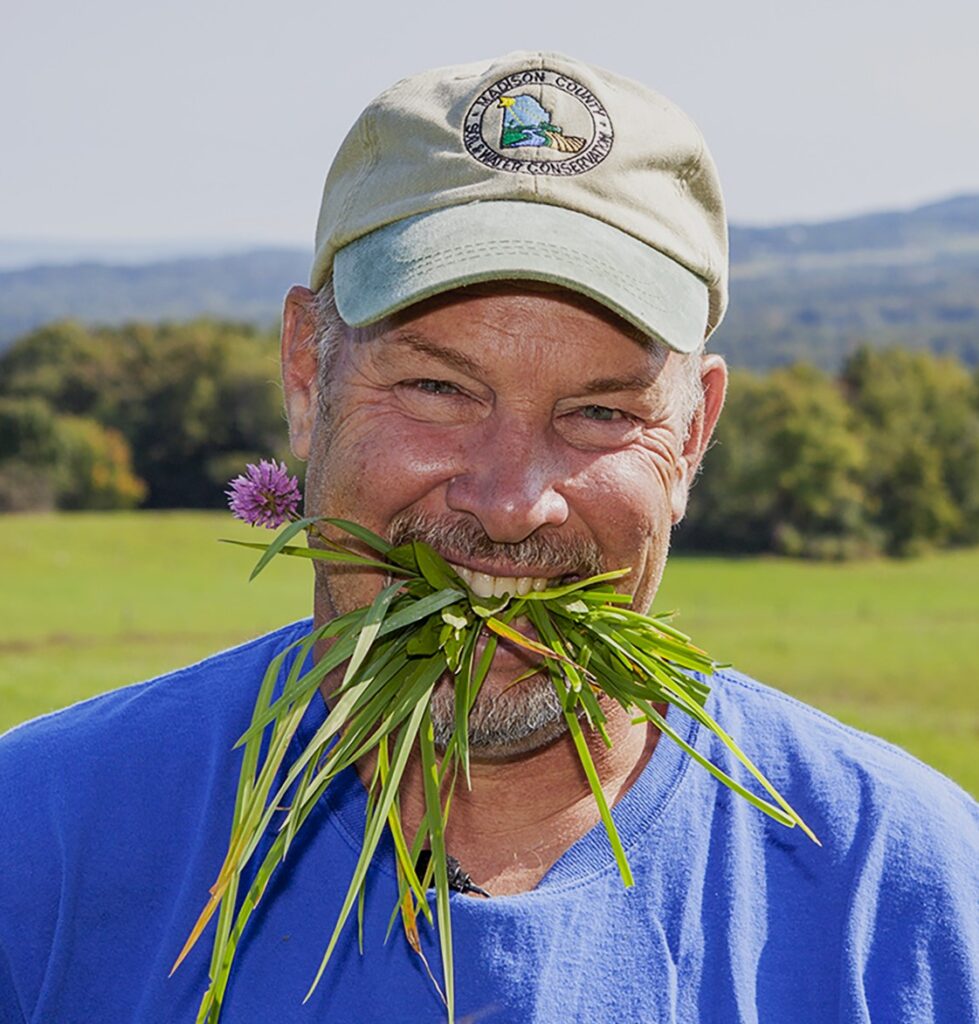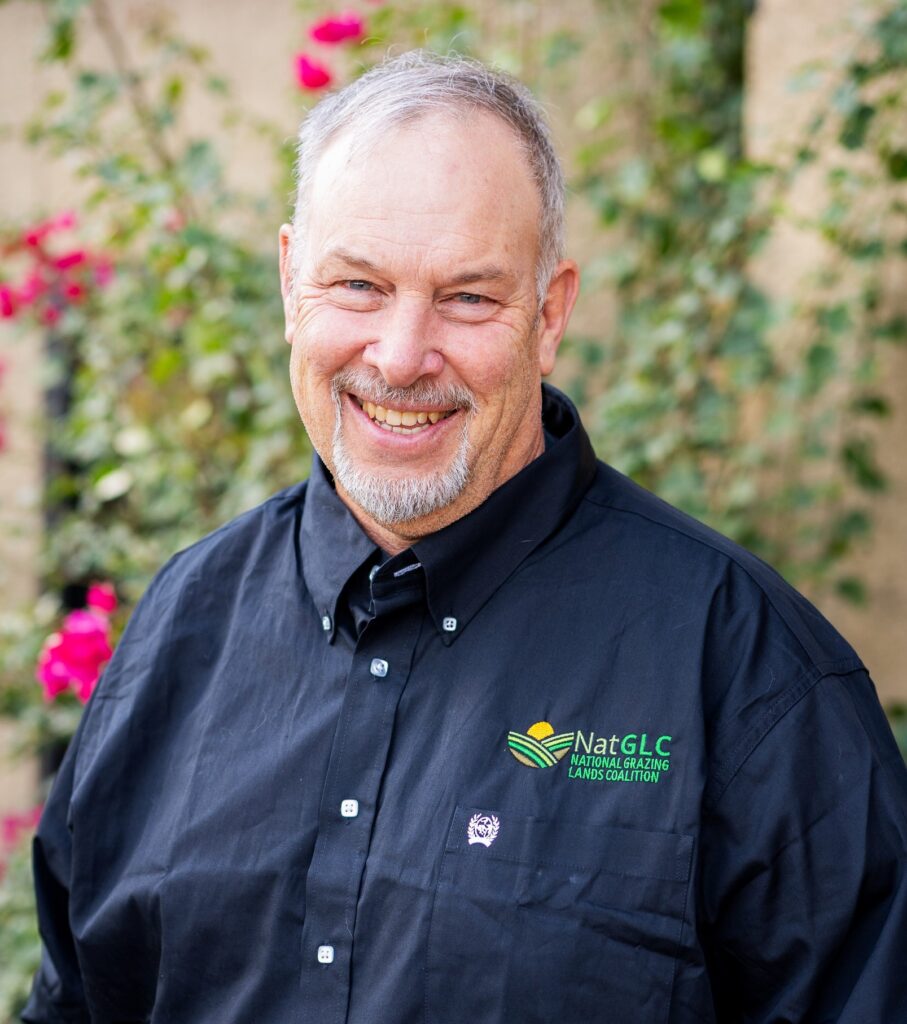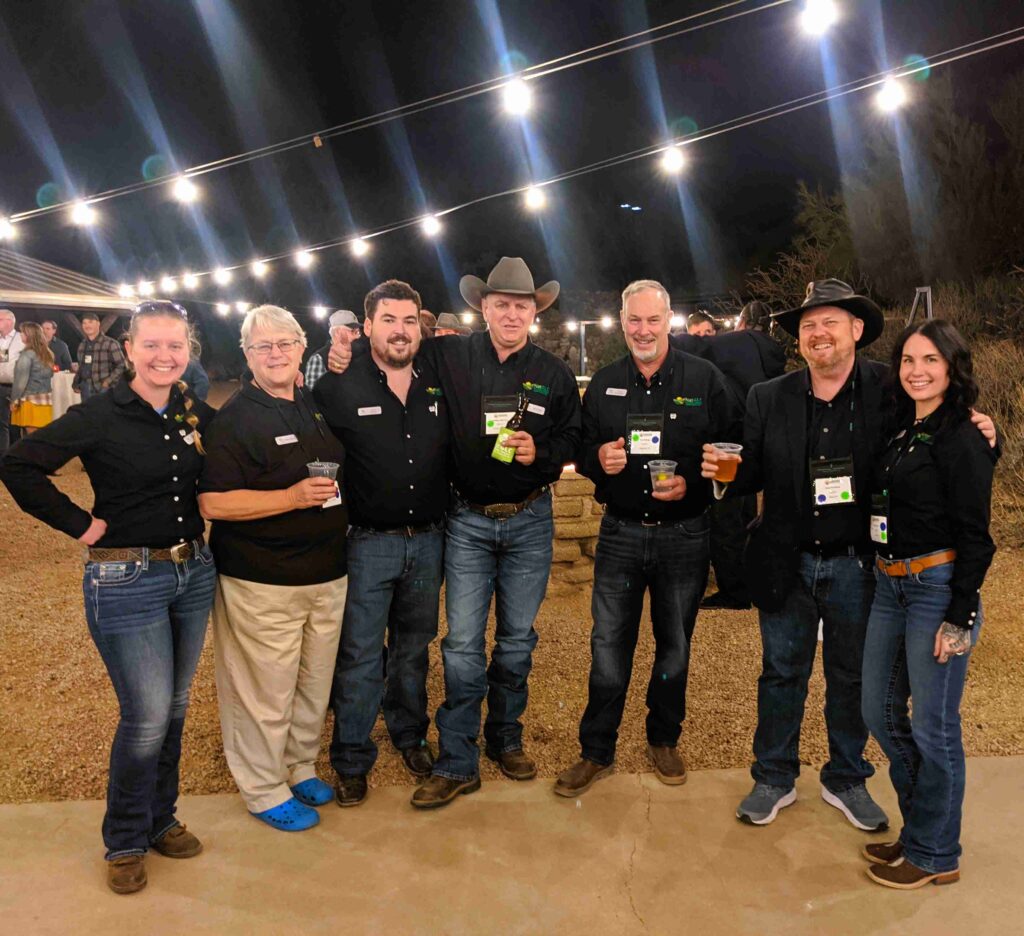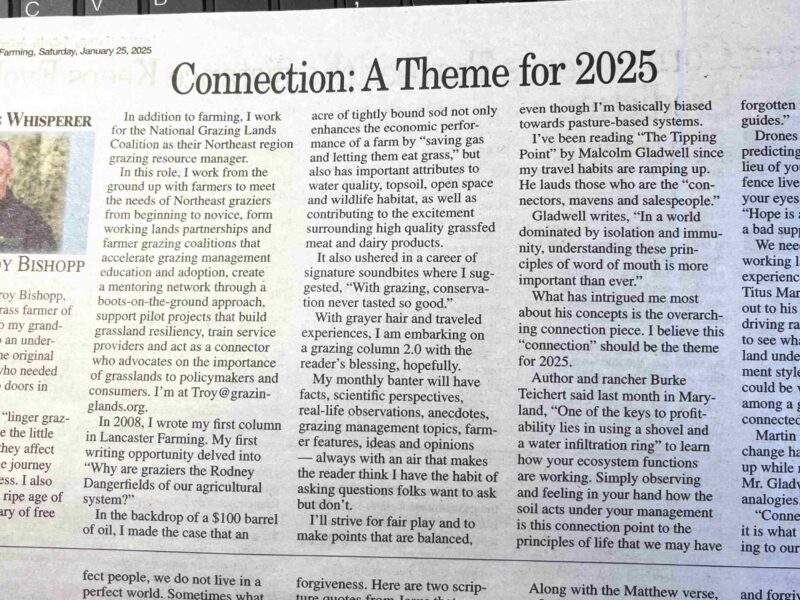“Connection”

Greetings from the East, I’m Troy Bishopp, Central NY grass farmer of 40 years, Pop Pop to my grandchildren, husband to an understanding wife and the original “Grass Whisperer”, who needed a moniker to open up doors in Washington, D.C. I practice the art of “Linger Grazing” where we observe the little things and think how they effect the bigger things on the journey to optimize for happiness. I also dabble in banter, at the ripe age of 61, among the “sanctuary of free thinkers”.

In addition to farming, I work for the National Grazing Lands Coalition (NatGLC) as their Northeast Region Grazing Resource Manager. In this role, I work from the ground up with farmers, to meet the needs of Northeast graziers from beginning to novice, form working lands partnerships and farmer grazing coalitions that accelerate grazing management education and adoption, create a mentoring network through a boots-on-the-ground approach, support pilot projects that build grassland resiliency, train service providers and be a connector who advocates on the importance of grasslands to policy-makers and consumers. I’m at Troy@grazinglands.org.
In 2008, I wrote my first column in Lancaster Farming with then, Regional Editor, Tracy Sutton Schorn and Executive Editor, Dave Lefever. My first writing opportunity delved into “Why graziers are the Rodney Dangerfield’s of our agricultural system”? In the backdrop of a 100 dollar barrel of oil, I made the case that an acre of tightly bound sod not only enhances the economic performance of a farm by “saving gas and letting them eat grass”, but also has important attributes to water quality, topsoil, open space, wildlife habitat and is contributing to the excitement surrounding high quality grass-fed meat and dairy products. It also ushered in, a career of signature soundbites where I suggested: “With grazing, conservation never tasted so good”.
With grayer hair and traveled experiences, now LF Staff Writer, Dave and I are embarking on a grazing column 2.0, with of course, the reader’s blessing. The monthly banter will have facts, scientific perspectives, real-life observations, antidotes, grazing management topics, farmer features and ideas, opinions, and always have an aire that makes the reader think—-huh. I have the bad (good?) habit of asking questions folks want to ask but don’t. I’ll strive for fair play and to make points that are balanced, even though I’m basically biased towards pasture-based systems.
I’ve been reading “The Tipping Point” by Malcolm Gladwell since my travel habits are ramping up. He waxes on about the “Law of the Few, the Stickiness Factor and the Power of Context while lauding people who are the “Connectors, Mavens and Salespeople”. In his last stanza, he writes, “In a world dominated by isolation and immunity, understanding these principles of word of mouth is more important than ever”. What has intrigued me most about his concepts is the overarching connection piece. I believe this “connection” should be the theme for 2025.
Author/rancher, Burke Teichert said last month in Maryland, “One of the keys to profitability lies in using a shovel and a water infiltration ring” to learn how your ecosystem functions are working. Simply observing and feeling in your hand how the soil acts under your management is this connection point to the principles of life that we may have forgotten in lieu of the “practice guides”. Drones flying over your pasture predicting forage production in lieu of your footsteps and virtual fence livestock collars in lieu of your eyes equate to the phrase; “Hope is a good breakfast, but it is a bad supper.”

We need connection with the working lands and to each other’s experiences. Pennsylvania Grazier, Titus Martin said 50 people came out to his pasture walk in the cold, driving rain because they wanted to see what was happening on the land under a particular management style and what decisions could be vetted for improvement among a group of passionate, connected farmers. He emphasized how real change happens from the ground up while not realizing he mirrored Mr. Gladwell’s Tipping Point analogies.
“Connection is why we’re here; it is what gives purpose and meaning to our lives”. ~ Brené Brown


 Ya Don’t Talk about Mental Health at a Grazing Conference
Ya Don’t Talk about Mental Health at a Grazing Conference »
»